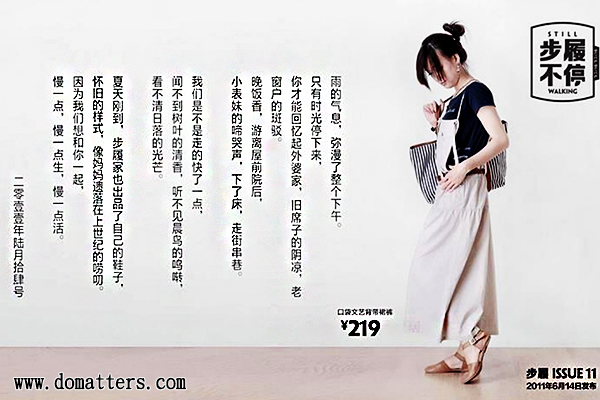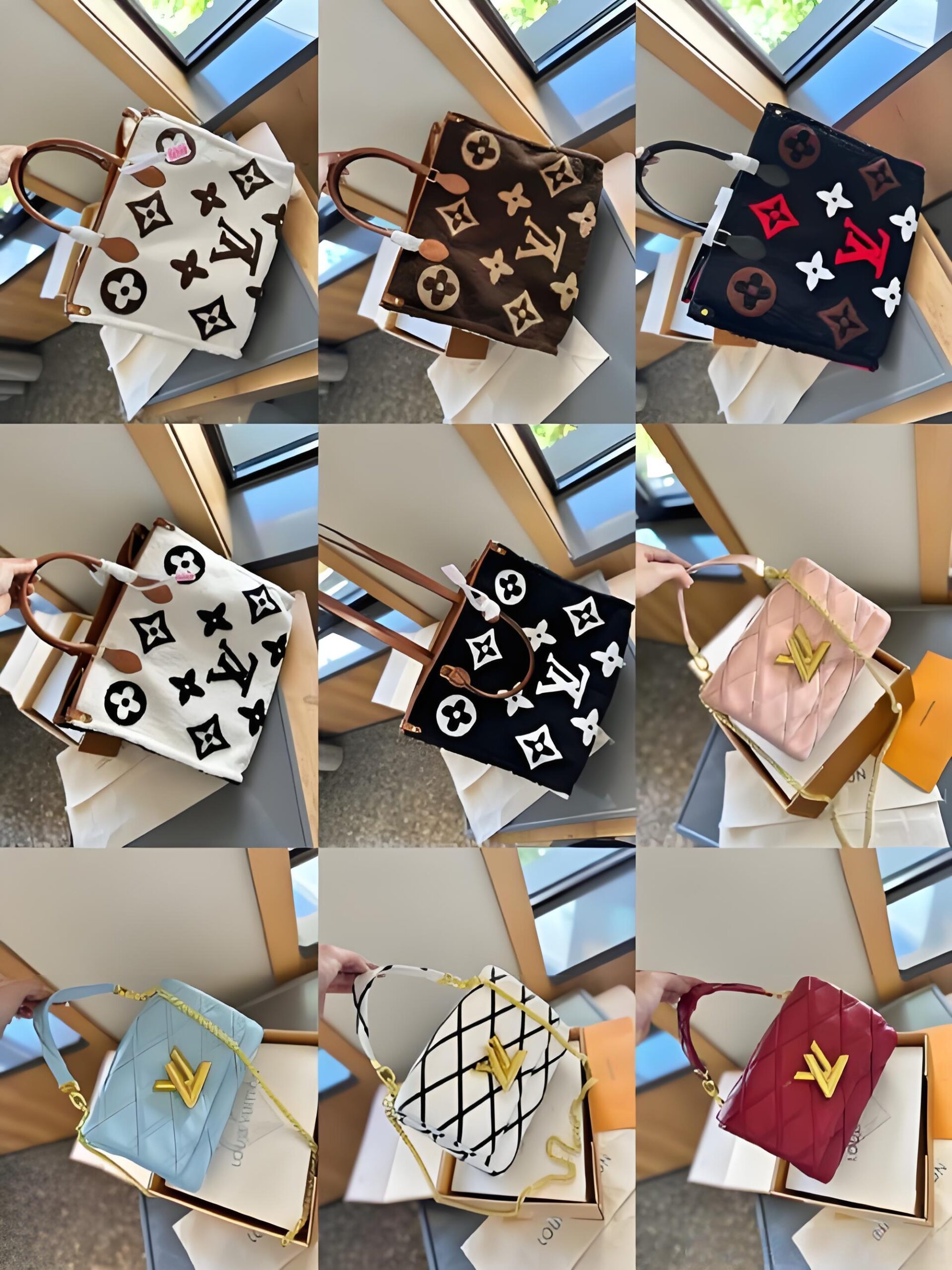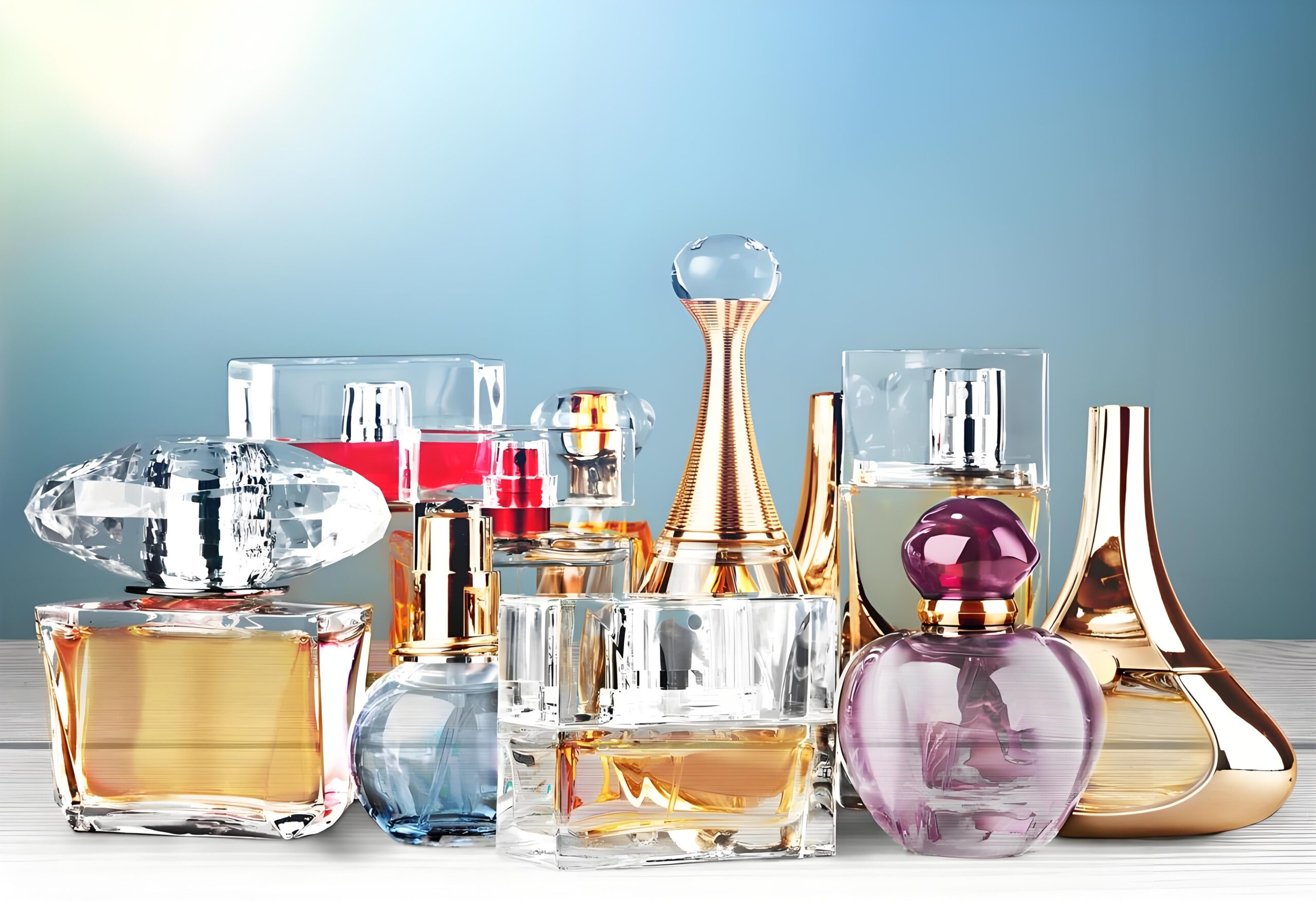How to make your expensive products sell well? Have you used these 9 methods in brand marketing ?
Everyone knows that having interest and demand does not mean buying!
From the customer’s heart to the final choice to purchase, there are still a lot of decision-making obstacles and concerns, which make people hesitate or give up directly. Among them, price is definitely an important factor affecting the final sale. The vast majority of people are very sensitive to the price of a product, and once they feel expensive, they may give up buying.
What should our brand do? How to make people more accept this “feel expensive” product?
In addition to the use of marketing strategies such as “cutting prices and discounting”, “creating a sense of scarcity,” or “forced persuasion” and so on, the most important thing at this time is to effectively reduce consumers’ price concerns about buying expensive products.

Domatters once read Li Jiaoshou’s article “Consumption Upgrade, Is There No Opportunity for Bargains?” “. In the era of consumption upgrades, how can people who are not so short of money buy cheap goods? In addition to the abused “low price and high value” and “Disguised as a premium product”, what you should do best is to flexibly adopt the following 6 methods to shape consumers’ “ideal self” and reduce the obstacles to buying cheap goods:
1) Create an image of an expert—“You buy cheap things because you are an expert”
For example, to promote the concept “I buy cheap goods not because I don’t have money, but because I have a lot of knowledge and can tell the real good from bad.”
2) Fight against motivation—“You buy cheap, because money can’t help you achieve your goals”
For example: a large number of liquor companies advocate drinking more expensive liquor can make people become more expensive, but if consumers are made to realize that “businesses cannot rely on more expensive liquor, but on other”, consumers will reduce their motivation to consume high—end liquor. .
3) Use groups—“You have to buy cheap ones, because people who shouldn’t buy have bought them”
For example, a classic copy of the Volkswagen Beetle, which focuses on low—cost and practical use, is “The amazing inside story of Washington—more than 1,200 diplomats in Washington are driving this car.”
4) Transfer classification—“You have to buy cheap ones, because this classification does not need to be good”
For example, the low—end coffee launched by KFC says “coffee is for awakening, not for styling.” In this way, the coffee sold by KFC is not so low—end.
5) Longer the target distance—“You have to buy cheap ones, because you need more effort.”
For example: “Today’s peak is definitely not the peak, you have more way to go—eat instant noodles first.”
6) Shift consumption—“You want to buy cheap goods, because you have to take the money to do more meaningful things”.
For example, the copywriting of Taiwan Quanlian Supermarket: Using the money saved by Quanlian can help you do other more meaningful things.

To be honest, these six methods are absolutely ingenious, which can give cheaper products more opportunities and more directions for copywriting.
Everyone is shouting to sell goods, it’s not enough if you don’t have any skills! Domatters has a bold idea. It seems that the above methods are reversed to sell expensive products, which is also very good. Domatters will do the opposite and share 9 practical ways to tell you how to make consumers more willing to buy expensive ones. Let’s take a look.
01
Create an insider image
“Customers buy expensive, because they are experts”
Why are many consumers reluctant to spend money on more expensive items?Some very important reasons are that they think it is too wasteful, there is no need to buy expensive ones, they will feel guilty if they spend too much money, or worry about not being recognized by others, etc.
At this time, your promotional copy needs to provide him with a sufficient reason for buying expensive things, so that he can divert his attention from these obstacles. That is a good reason to build an “expert image”. “I bought this expensive one because I really understand it, and the cheap one really doesn’t work.”
For example, for a watch, if you just say “high price and luxury, the choice for success”, this is of course no problem for people who like to show off their wealth. But if this is for ordinary people, it does not eliminate his guilt of paying high prices. But it is easier to justify buying “there are only two kinds of watches in the world: German watches and non-German watches, which are well known to the amateur”.

It gives the consumer this feeling of, “I’m not buying it because I’m hot, I’m not having fun, I’m buying it because I know what I’m doing, I know what I’m doing…It’s better, it’s more durable, it’s actually more cost effective.So, when consumers want to buy your product, but can’t find a good reason to buy it, try this method to make them think, “It’s not smart to buy that low price, it looks like a layman, the real expert buys what…”
02
Attack motivation
“Customers buy expensive ones, because cheap ones can’t help they reach their goals”
The reason why consumers want to buy a certain type of product is nothing more than to achieve a goal. If you make consumers feel that buying cheap things will not achieve this goal, they will not buy it.
There is a classic story in China during the Spring and Autumn Period and Warring States Period. At that time, Gongsun Yan wandered through the Six Nations and wanted to implement the “integration” plan, and finally persuaded the Six Nations Alliance to attack Qin. However, Qin Xiang Zhangyi went to Chu, Qi, Zhao, and Yan successively to persuade all countries to attack Qin. It was Gongsun Yan’s strategy and could not achieve the goals of all countries. In the end, Zhang Yi persuaded the princes of various countries to “connect horizontally” and pro-Qin, and the six-nation “integrated vertical” alliance was self-defeating.
Another example is a customer who wants to buy a set of fashionable and personalized clothes. If you buy a cheap one, it may be easy to hit the shirt every day, and it will not help them achieve the goal they originally intended to accomplish. The more expensive customized clothes are the better choice. So, when you want to let others buy expensive, you need to ask yourself: What is the goal of my consumers buying this product? How to make them feel that buying the cheap ones can’t actually achieve this goal?

03
Use groups
“Customers have to buy expensive ones, because everyone who shouldn’t have bought them”
When you want to persuade a person, in addition to focusing on him or the product itself, you can also choose to focus on the groups that influence his purchase. If a consumer finds that people who are less likely to buy an expensive product than him have started to consume it, they are more likely to overcome their inner hesitation and buy the expensive one.
For example, a mother was unwilling to give her child a more expensive training course, but when she saw that other families with much worse conditions were trying to choose the best training course for her child, she felt even more that she should give her child a better training course. . So, when you find that consumers are coveting your product, but feel it is expensive, you need to ask yourself: Who can I make it more unlikely to use this product? And show it to consumers.

04
Transfer classification
“Customers have to buy expensive, because it is not expensive under this classification”
When consumers choose a product, it is often not just because of its own functional value. They also value other value attributes of the product. Each type of product has its corresponding value attribute and classification definition. We can transform it and give the product a different value definition. Such as Starbucks. Its original value classification is just delicious and healthy coffee. But when it was endowed with cultural factors and made a value conversion, it was successfully upgraded to the category of working people acting as artifacts. In this way, a cup of starbucks for dozens of dollars does not seem to be too expensive.

In the same way, you can also find new value categories for your products, including identity value, social value, symbolic value, spiritual value, emotional value, cultural value… and so on. Under this classification, consumers will feel that buying this product is not very expensive.
A cup of a few hundred yuan is very expensive, but it is not expensive to make it into a high-end decoration, because the price is normal as a decoration.
05
Get closer to the target
“Customers want to buy expensive, because they have worked very hard”
If consumers feel that there is still a long way to go between reality and ideals, and a long way to go, he will be more self-disciplined at this time and tend to consume low-priced, practical products. Conversely, if a person feels that he has paid a lot for a certain goal and gets closer to the goal, he will want some “compensation” and want to “reward” himself. At this time, he will be more inclined to consume high-priced, enjoyable products. So, if you want your consumers to buy something expensive, yes, you can think of it this way. For example, what tasks or goals are the target users currently facing? What did he pay to accomplish this goal? How much effort did he spend? The more specific and detailed, the more impressive it is, and it’s best to imply that he has achieved something. Finally, point out that the time has come to compensate yourself, and how your product allows users to “reward” themselves.

06
Use experience learning effects
“Customers want to buy expensive, because they have suffered a lot in the past”
When you want a user to accept an expensive product, you can find a way to use his past experience to let him make his own choice. If a person feels that he has failed in the same thing once, he will not want to fail a second time. No one likes to fall twice in the same place.
For example, last time he lost a lot of money because he bought it cheaply. This time he definitely won’t. Based on this pain point, the user feels that he does not want to fall twice in the same place.
For example, the copywriting of the necessary mall sofa:
When you are alone, don’t wrong yourself; in a two-person world, don’t wrong your wife; for a family of three, don’t wrong your children

So, when you want others to buy expensive products, you can ask your own brand products like this. What wrong choices did your consumers make in similar situations in the past? Did the user suffer a loss because of the cheap one? And how does your product avoid this loss?
07
Shift consumption
“Customers have to buy expensive, because they want to use it to do more meaningful things”
There is an interesting effect in economics. When people buy certain things, they always make excuses to say that this is to pay for their family members, and then it will be easier to complete the purchase. Therefore, when you want consumers to buy something expensive, you can give them a reasonable reason to buy, that is, buy this expensive, because you want to use it to do more meaningful things. You can first analyze what “meaningful” things your product can help consumers accomplish, especially those they are generally willing to spend money on. Then you use emotional design to highlight this meaning, thereby reducing the psychological guilt of spending money and facilitating purchases.
For example, a piece of clothing priced at 2,000 yuan may feel expensive if the user buys it for himself and he is reluctant to buy it. But if the user bought it as a birthday gift for his lover, then he might buy it without hesitation.
08
Show amazing product facts
“Customers want to buy expensive, because it is really great”
Although the consumer is already interested in your product, he has a preliminary understanding of your product. But if you can further show more amazing product facts, he will be more excited, and even skip price barriers. Such as Canon camera ads. It demonstrated its camera anti-shake function, which is like fixing the subject in motion when taking pictures. A simple expression shows the product facts vividly.

There are even more powerful brands that use some unconventional methods to make product facts amazingly displayed. All consumers can do is choose it, there is no need to entangle it.

The Texas Armoring bulletproof glass company in the United States is a classic example. Their chairman Trent Kimball asked employees to put the bulletproof glass produced by his company in front of him, and then asked the employees to hold the AK—47 at a distance of less than 5M. The shot was directed at the glass, and the shot was directed at the head of his boss.
After firing a few shots, there were obvious bullet holes in their glass, but the glass was still not penetrated. After this video quickly became popular, everyone knew that the bulletproof glass of the Texas Armoring house is really bulletproof, so why not expensive.
09
Evoke ideal self-image
“Customers have to buy expensive, because this is him/her”
The shopping standards of every customer are mostly inseparable from their own image. For example, I want to be a good mother, an elite in the workplace, a fashionista, or a second-generation youth. Different self-image will make you have different shopping tendencies, and shopping is also strengthening your self-image. In order to show the ideal self-image, I am willing to buy something expensive.
At this time, if the consumer feels that “I bought this expensive because it is more in line with my ideal image and can make others feel my image”, the psychological barrier that the price brings to her will be greatly reduced. For example, the Taobao brand “Non-stop” has always created a strong literary style to attract similar literary young women. It is to create a strong brand image to gain consumer self-image recognition, and ultimately affect purchase choices.
For example: its copywriting is as below:

只有时光停下来。
你才能回忆起外婆家,旧席子的阴凉,
老窗户的斑驳。
晚饭香,游离屋前院后,
小表妹的啼哭声,下了床,走街串巷。
Only time stops.
Only then you may remember the shade of the old mat at Grandma’s house,
Mottled old windows.
Supper is fragrant, after leaving the front yard of the house,
With the cry of the little cousin, you got out of bed and walked on the streets.
So, what kind of “self-image” do my consumers yearn for? How can my brand and products help better express their ideal self? Isn’t my customer trying to buy expensive, but to consolidate their self-image? You can ask yourself the above questions.
Well, the above are the 9 ways consumers can use to motivate them to buy when they think the product is too expensive.
Marketing and copywriting are sometimes really interesting. There is no standard answer. The core lies in how deep you know the product and how well you know the target group. Observe more, think more, practice more, sum up more, it’s always right.
If this article is useful, please help Domatters and share it with people around you. Welcome to comment below, thanks!
Note: The pictures in this article are from the Internet










